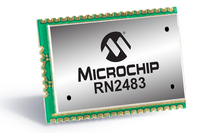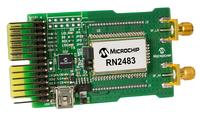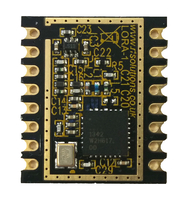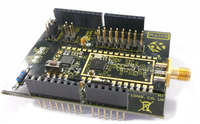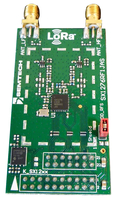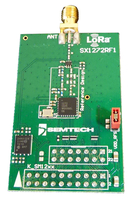
|
What is LoRaWAN?
If you are looking for a common protocol for your smart assets and IoT devices to communicate with one another then LoRaWAN™ is a great choice. LoRaWAN™ is a long range (LoRa), wide area network (WAN) specification that is optimised to use very little power. This means LoRaWAN™ is perfect for wireless, battery powered end points in an IoT network, and can securely deliver two way communications at data rates from 0.3 kbps to 50 kbps.
Ideal applications for LoRaWAN™ are sensor networks, security systems, smart home, smart metering, industrial control and smart cities. Amsterdam was the first city to crowdfund an Internet of Things Data Network using 10 gateways to give complete LoRaWAN™ coverage.
Ranges of 2-5km in an urban environment or up to 15km in a suburban environment are possible by trading off communication range and message duration over a spread spectrum of sub GHz frequencies and an adaptive data rate scheme. LoRaWAN™ operates in a star of star topology where gateways provide a transparent bridge sending and receiving messages between end point devices and a central network or cloud.
The gateways, typically powered devices, communicate via the LoRaWAN™ protocol with end points before relaying the messages on through more traditional protocols such as Ethernet, 3G or Wi-Fi. Most end point communication is bi directional however LoRaWAN™ supports multicast broadcasts for node upgrades or mass distribution emergency messages.
This feature is especially useful in the Flood Network’s implementation of LoRaWAN™ with a network of sensors along an area susceptible to flooding to provide an early warning system to affected residents.


For LoRaWAN™ implementations managing critical national infrastructure data or personal data the specification includes several layers of encryption.
• Unique Network key (EUI64)
• Unique Application key (EUI64)
• Device specific key (EUI128)
Depending on your application end devices can have different classes of functionality.
Class A - the lowest power end-device class where devices are allocated a set time for communication.
Class B – In addition to an allotted slot, Class B devices open extra receive windows at scheduled times.
Class C – the most power hungry, Class C devices have almost continuous receive windows unless they are transmitting.
